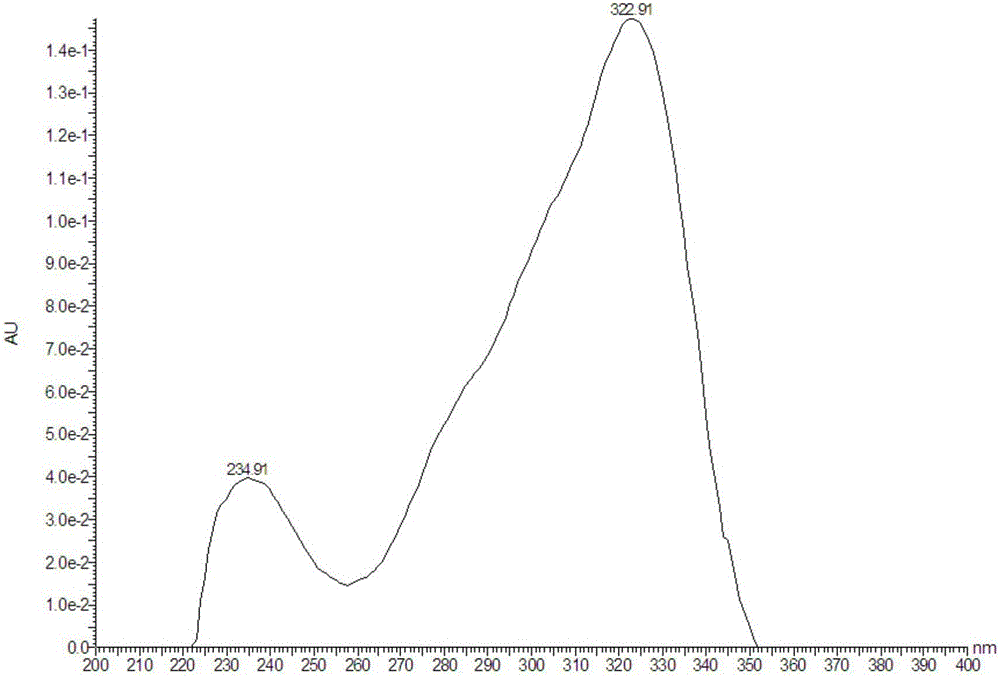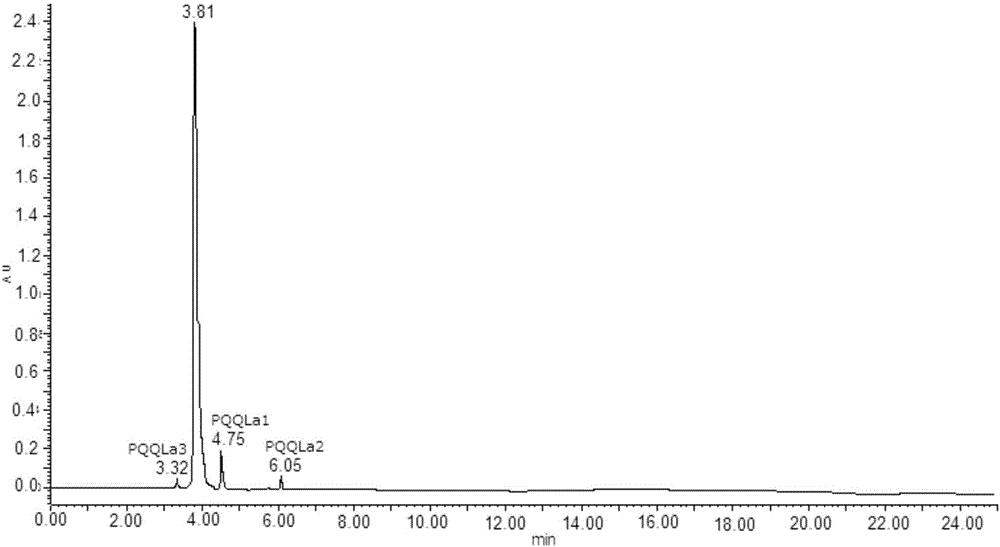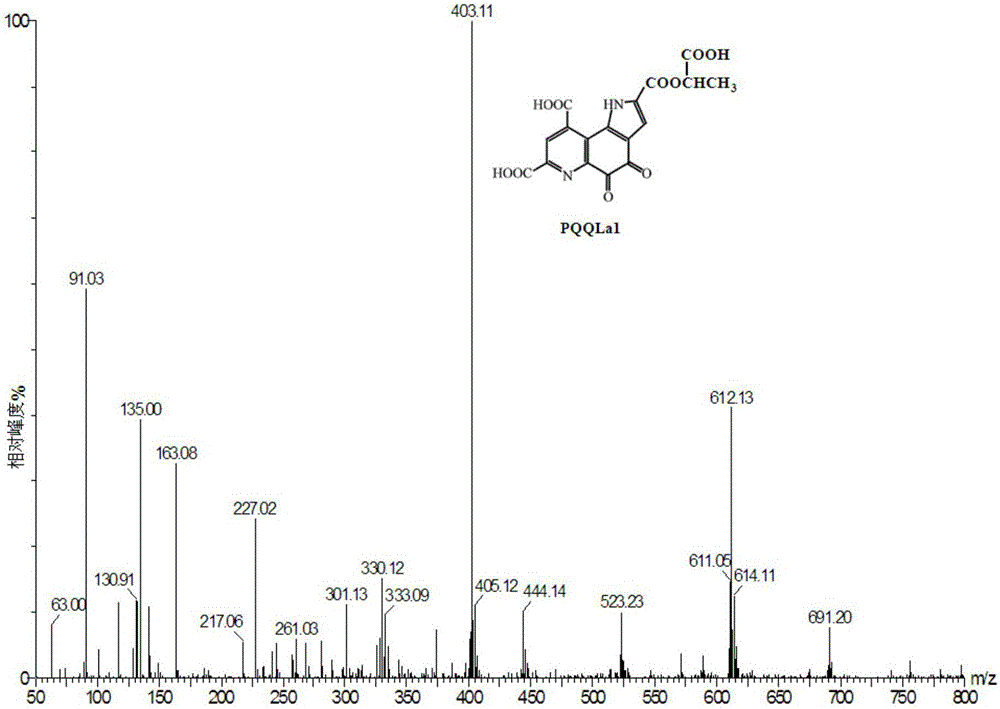Method for detecting effect of PQQ on lactic acid by combining HPLC with UPLC-MS
A lactic acid, action technology, applied in the field of biological analysis, can solve the problems of many interference factors, high cost, poor sensitivity and precision, etc., and achieve the effect of optimizing separation conditions
- Summary
- Abstract
- Description
- Claims
- Application Information
AI Technical Summary
Problems solved by technology
Method used
Image
Examples
Embodiment 1
[0057] A method for detecting the effect of PQQ on lactic acid by combining HPLC with UPLC-MS, the steps are:
[0058] (1) UPLC analysis conditions:
[0059] ACQUiTY UPLC@ BEH C18 column (2.1×100mm, 1.7μm), mobile phase A: H 2 O+0.2%TFA, B: methanol; 5 / 95 B / A elution for 5 minutes, 20 min gradient elution to 75 / 25 B / A; detection wavelength 322nm;
[0060] (2) Determination of wavelength
[0061] Weigh a certain amount of PQQ and lactic acid, dissolve them in 0.1M hydrochloric acid solution, prepare 1mM PQQ solution and lactic acid solution, mix according to the v / v ratio of 1:5, keep away from light, incubate in 37℃ water bath for 24h, stop in ice bath Response; the ultraviolet scanning diagram shows that the ultraviolet absorption at 322nm is relatively high; select 322nm as the detection wavelength;
[0062] (3) The influence of mobile phase components on separation
[0063] Add 0.05%, 0.1%, 0.15%, 0.2%, 0.3% TFA (trifluoroacetic acid) to the mobile phase respectively, w...
PUM
 Login to View More
Login to View More Abstract
Description
Claims
Application Information
 Login to View More
Login to View More - R&D
- Intellectual Property
- Life Sciences
- Materials
- Tech Scout
- Unparalleled Data Quality
- Higher Quality Content
- 60% Fewer Hallucinations
Browse by: Latest US Patents, China's latest patents, Technical Efficacy Thesaurus, Application Domain, Technology Topic, Popular Technical Reports.
© 2025 PatSnap. All rights reserved.Legal|Privacy policy|Modern Slavery Act Transparency Statement|Sitemap|About US| Contact US: help@patsnap.com



